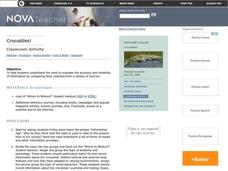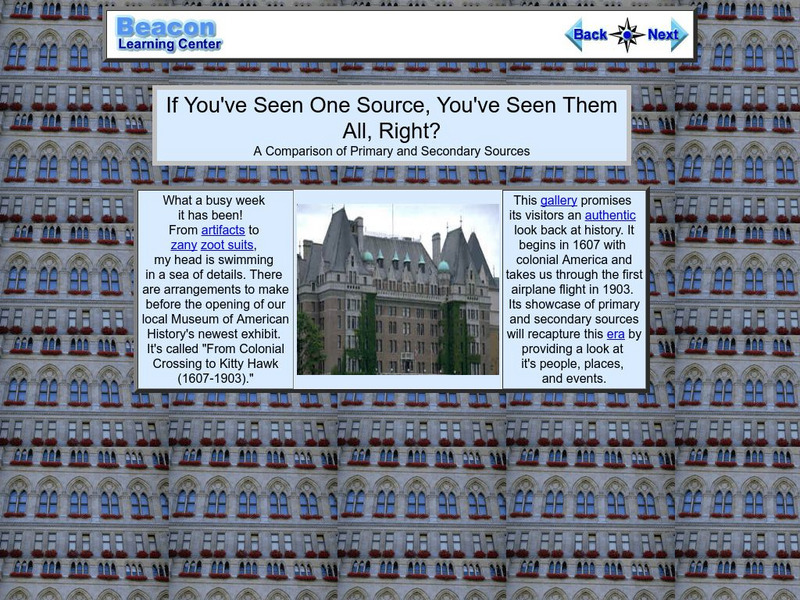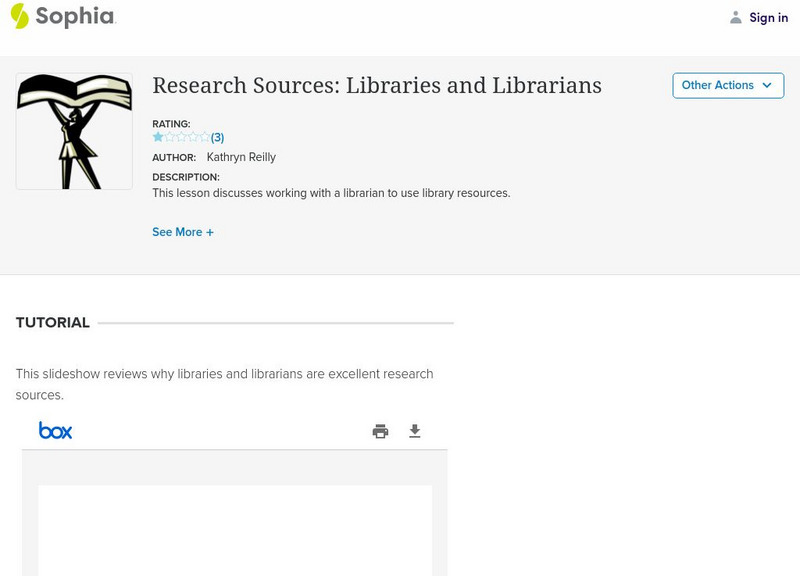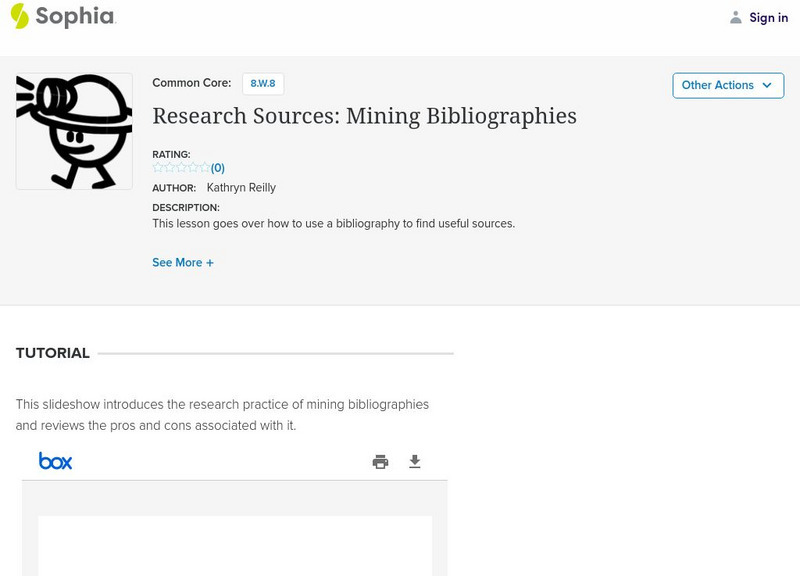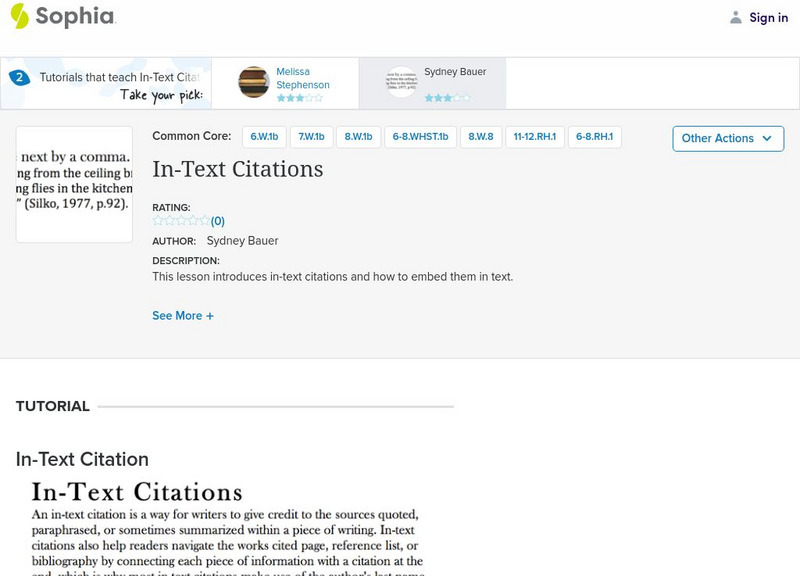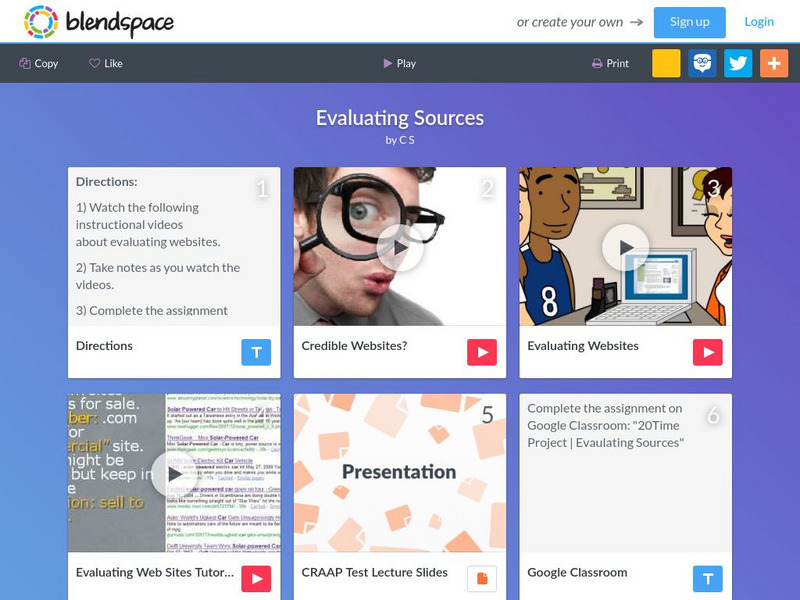Curated OER
Plagiarism
Don't get caught plagiarizing! Before starting your research unit, use this lesson plan to help your young writers identify plagiarism. The truth is, many kids don't even realize when they're doing it! They practice citing sources when...
Curated OER
Crocodiles
Work on research procedures in this lesson, which prompts writers to collect and evaluate information pooled from a number of sources. They work in teams to collect information about crocodiles from different sources. They compare the...
Curated OER
First Grade Language
In this language arts worksheet, 1st graders answer multiple choice questions about abc order, research sources, and more. Students complete 25 questions.
Curated OER
ISP Chart
In this graphic organizer worksheet, students chart information they have gained when researching a particular topic. Students include details of information, the source of this info, and the page where it could be found.
Beacon Learning Center
Beacon Learning Center: If You've Seen One Source, You've Seen Them All. Right?
This is a tutorial teaching the difference between primary and secondary research sources. It provides specific examples and asks students to answer questions along the way. Java is required.
Beacon Learning Center
Beacon Learning Center: Information Elimination: Lesson on Narrowing the Topic
This is a tutorial which focuses on how to narrow the topic for expository writing, how to determine what information to keep or eliminate, and what questions to ask yourself. Students respond to questions throughout. A comparison is...
Sophia Learning
Sophia: Mla Bibliographies
This tutorial focuses on MLA style bibliographies; it offers a video lesson defining bibliography, explaining the difference between bibliography and works cited, giving general format information, listing what is included, and providing...
Sophia Learning
Sophia: Research Sources
This slideshow lesson focuses on research sources by listing 10 types of sources: books, periodicals/magazines, newspaper articles, scholarly articles, databases, reviews, interviews, lectures, media (film, television), and websites. It...
Sophia Learning
Sophia: Research Sources: Libraries and Librarians
This slideshow lesson focuses on using libraries and librarians as research sources. It explains what makes them excellent sources of information because of expertise and reference materials available; it also lists the cons of using...
Sophia Learning
Sophia: Research Sources: Mining Bibliographies
This slideshow lesson focuses on mining bibliographies, or searching other bibliography pages on your topic to locate potential sources for your own research. It discusses the pros and cons of mining bibliographies.
Sophia Learning
Sophia: Research Sources: Periodicals
This slideshow lesson focuses on the use of periodicals as research sources; it discusses the pros of using periodicals as organizational aids and in research of current events and also the cons of periodical's lack of depth and possible...
Sophia Learning
Sophia: In Text Citations: Lesson 6
This lesson introduces in-text citations and how to embed them in text. It is 6 of 7 in the series titled "In-Text Citations." W.9-10.8 Sources
Sophia Learning
Sophia: In Text Citations: Lesson 7
This lesson introduces in-text citations and how to embed them in text. It is 7 of 7 in the series titled "In-Text Citations."
TES Global
Blendspace: Evaluating Sources
A seven-part learning module with links to texts, videos, slides, and a quiz to use while learning how to evaluate research sources.



